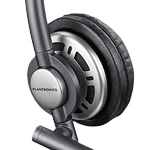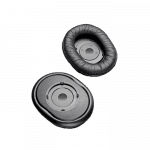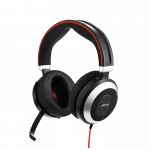Benefits of Noise Canceling Headsets

Customers like yourself often ask us:
What is noise canceling in a headset?
How does noise canceling work?
What is active noise cancellation?
In our HEADSETS 101 series, we’ll cover all of those questions and more as we simplify and explain the benefits of noise-canceling headsets in great detail.
Last Updated – November 2020
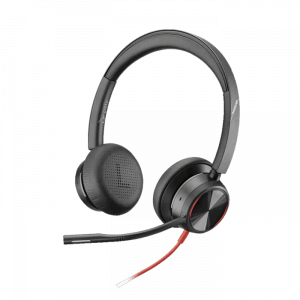
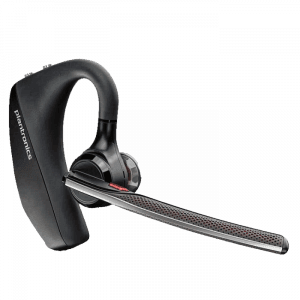
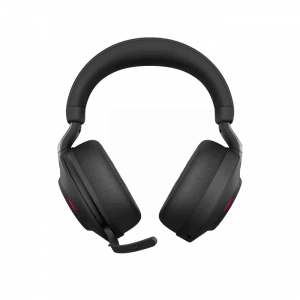
The term noise canceling can be confusing because it relates to two different technologies. Prior to the 2000’s, a noise-canceling headset would only benefit your caller. It had no direct effect on the user of the headset. It was built into the microphone and would cut down on background noise around you, allowing your caller to hear you more clearly. Manufacturers estimate up to 75% of your background noise will be reduced to your caller.
Around 2015, manufacturers started introducing Hybrid and Active Noise-Canceling technology into headsets. This benefits the user of the headset by reducing background noise and distractions, improving their ability to hear more clearly. To find the perfect Noise Canceling Headset to meet your needs, you will need to consider wearing options, corded versus wireless, features and budget. A high-quality noise canceling headset will be compatible with desk phones, VoIP computer softphones, mobile apps and Bluetooth devices.
In summery, if a headset description lists noise canceling, it’s relating to only your microphone quality and how your caller hears you. It has no benefit for the person using the headset; and it won’t help you hear better in a loud environment. If you opt for a headset with Active Noise Canceling, the sound you hear as the user is effected. Your experience in loud environments will be better while noticing a significant improvement in clarity; when compared to standard models. As you continue reading, you will learn what is noise canceling and how to find the perfect solution to meet your needs and budget.
Do Callers Hear an Occasion Voice or Word-for-Word In Your Background?
Because every situation is different, and each person’s perceptions vary, there is a great way to see what quality of noise canceling you’ll need. Simply call into the location where you will be using a headset and listen for background noise during a busy time. Pay special attention when there is silence on the line to see if you can hear people talking in the background. If you can, a higher quality noise-canceling headset will be a huge benefit. If you don’t hear much background noise, you can purchase a standard, less expensive model.
How Loud Is Your Environment? Does This Look Familiar?
What is Noise Canceling? It Refers to Microphones & Speakers.
When consider headsets for loud environments, most business grade headsets have noise canceling built into the microphone. That helps callers hear you better, but doesn’t address you hearing better. Advances in technology and an increase in demand, with more users working in loud office and home environments, now have started a trend where headsets have noise canceling being added separately into the speakers. This helps the users of the headset tune out background noise, allowing them to focus more on their calls with less distractions.
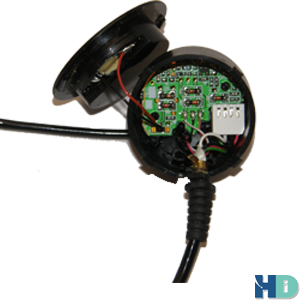
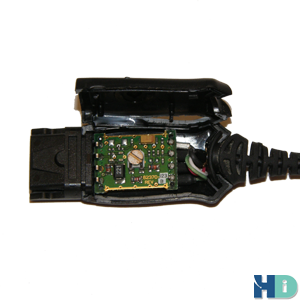
Noise-Canceling Microphone Circuitry
How a Noise Canceling Microphone Works.
A noise-canceling microphone has two or more microphones picking up sound from different directions. The primary microphone faces your mouth, while secondary microphones pick up background noise in all directions. The headset targets your voice and electronically reduces the background noise. This makes your voice crisp and clear to your caller.
Many different microphone designs exist from tiny holes, to groups of openings and even screens that all allow sound to pass through to the electronic microphone. They all work very similar with no clear advantage of any particular design. The primary noise canceling microphone will always face your mouth and be located on the end of the mic boom.
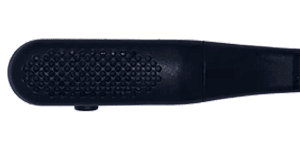
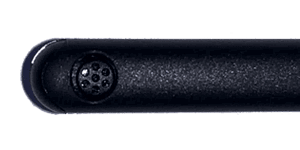
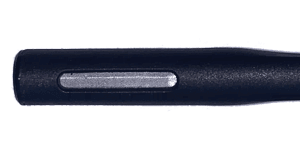
Examples of Noise-Canceling Microphones
If using a headset without a boom (boomless headsets), the microphones are built into the ear piece and target the area 2-3 inches in front of your mouth. The negative to boomless headsets and earbud type headsets that use a microphone built into the cable is they are prone to pick up extra background noise and transmit that to your caller. Because your voice is easily mixed with other background noise coming to the same area, the headsets can’t differentiate and will transmits everything. While great for some uses, these should be avoided for those that require the best audio possible to their callers.
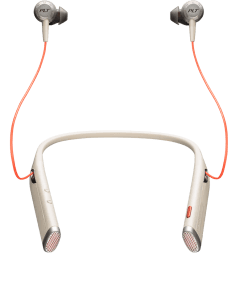
Noise canceling benefits some users more than others. It’s best to consider your typical environment and background noise when deciding between headset models at different price points, because of advanced features.
If you’re in a private office, your audio quality will be crisp and clear all the time. Less expensive noise-canceling headsets will provide the same audio quality as high-end solutions.
If you work in an office, call center or at home with kids playing and dogs barking, a noise-canceling microphone will be critical for optimal audio quality. You want your caller to hear you clearly and stay focused on you, not distracted with your background.
Adjustments to Improve Noise Canceling Microphone Effectiveness.
1) We work with our customers to set the microphone to the minimum level where callers hear you comfortably, but not pickup any extra noise. If using a headset that has microphone adjustments in the base or a PC that lets you adjust microphone levels in the audio settings, make a test call with a co-worker. Have them intently listen to you as you repeatedly count from 1 to 10. They will find a range where you sound great. You want to adjust your microphone level to the lower part of that range. That allows your caller to hear you comfortably, while not being extra sensitive and picking up extra background noise to transmit.
2) Adjust your mic boom so the end, where the actual microphone is located, is 1-2 finger widths (1/4 inch to 1/2 inch) from the corner of your mouth for optimal performance. This helps the microphone understand your voice and not be confused with other noise if pointed in the wrong direction.
New Headset Technology for Kids Playing and Dogs Barking.
Many customers are now working from home and require noise-canceling headset microphones that will eliminate sounds, like dogs barking, or babies crying. A typical noise-canceling headset targets human voices and office noise, reducing them by up to 75%.
When you have a dog barking or a baby crying, you will need the latest in headset technology. Acoustic fence puts an imaginary fence around you to completely block out any background noise outside of your area.
Headset Firmware Updates for Optimal Performance.
With headset technology constantly advancing, it’s best to perform regular firmware updates to ensure the best headset experience.
How a Noise Canceling Speaker Works.
We’re often asked what is active noise cancellation? Noise-Cancelling speakers help you, the users of a headset, hear better in loud environments and avoid background noise and distractions. The below will help differentiate the different kinds of noise cancellation.
Passive noise-reduction relates to how the headset is physically constructed. The larger the speaker/cushions and materials used, the greater the barrier. This separates noise around you from what you’re trying to hear through the headset (your caller).
Active noise-canceling typically has internal microphones listening for background noise. It electronically generates a reverse sound wave that is transmitted into your speaker to eliminate or cancel out the background noise. This technology does great with low, harmonic sounds like jet engines, fans or HVAC units with a constant hum. They tend to struggle with loud, irregular office type noise and higher frequencies.
Hybrid noise-canceling typically starts with the above active noise-cancelling. Then they add external microphones for a better understanding of the noise you’re trying to eliminate. This technology handles office noise much better, as well as, higher frequencies. The drawback is that it may generate more ‘white noise’ in your speaker, lessening your sound quality. Many newer working from home headsets will have adjustable levels of hybrid noise-canceling allowing you to find the best compromise of sound quality versus background noise-cancelling.
Considerations to Improve Noise Canceling Speaker Effectiveness.
1) When you’re working in a loud environment, the most effective headset will be one that covers both ears.
2) The larger the speakers/cushions, the more effective they will be in creating a sound barrier that separates outside noise from what you’re trying to hear. The louder your environment, the more focus you want to have, the more important it will be to find a headset using cushions that circle and go around your ear. This helps isolate you and drown out virtually all noise in your background.
3) Active Noise Canceling (ANC) and Hybrid Active Noise Canceling will improve your experience in loud environments, but will be slightly more expensive.
Why Are All Wireless Headsets Only Offered in Noise-Canceling Models?
If considering wireless headsets, you will quickly realize they only come in noise-canceling microphone versions. The reasoning behind this is, when you’re wireless, you have the option of moving away from the headset base. You may start out in your private office but find yourself roaming into a louder environment, thus needing noise-canceling technology.
For instance, you go into the break room to get a cup of coffee, and your headset beeps to tell you there is a call coming in. Your co-workers in the room are having a nice conversation, but you can still answer your call because your caller won’t be able to hear your coworkers’ conversation. Or you take a call in your office, but you need to go into the main office to get a file, and there are several workers discussing a new proposal as you walk by. You won’t have to put your call on hold, because your caller won’t be able to hear the words of the discussion, due to the noise-canceling microphone on your headset.
What are the Biggest Benefits of Noise Canceling Headsets?
If you have a basic headset with little or no noise-canceling capabilities, as you talk to a caller, they will hear your voice, as well as the co-workers around you. This is very distracting to most callers. Any time there is silence during your conversation, your caller will hear your coworkers’ conversations word for word. With a good noise-canceling headset, your caller will hear your voice well above the background noise. During those times of silence, they will only hear slight mumbling from coworkers in the background, instead of an entire conversation.
High-quality headsets using a noise-canceling microphone will reduce background noise, allowing your caller to hear your voice more clearly. This is very important, because the clearer your voice is, the less information needs to be repeated, and your conversation will be more accurate. It also keeps your caller focused on your conversation and less distracted with background noise; this is very important in a professional business environment — to maintain a level of confidence and trust with your callers when pitching products and taking credit card information.
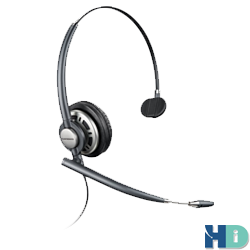
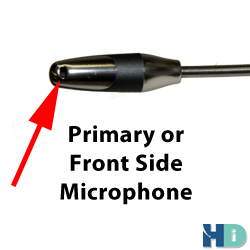
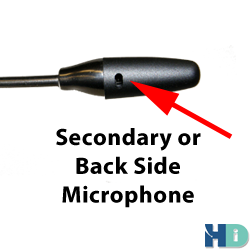
Plantronics HW710 Noise Canceling Headset
Why It’s Beneficial to Upgrade Older Headsets That Use Windscreens.
Microphone positioning is critical on older headsets that use a foam windscreen. A windscreen covers the microphones, making it impossible to know if you’re talking into the front or back microphone. Inadvertently twisting the microphone 180° and talking into the back side microphone, your headset will focus on your coworkers’ voices and attempt to cancel or reduce your voice. Older headsets have a flat surface area for the microphone. When you speak certain letters of the alphabet, they hit the flat surface and sound distorted to your caller. The windscreen is a critical component to round out the flat edges. This helps to absorb those hard letters, making your voice sound clean, crisp, and clear.
As technology has evolved, newer headset microphones have a rounded or tapered front that faces your mouth. This allows the microphone to pick up your voice accurately and let your voice flow past the microphone. The windscreen served its purpose in the advancements of headsets, but by eliminating them, you know exactly where your primary microphone is located. You also have a healthier work space, because a foam windscreen is an easy place to spread germs, if headsets are shared.
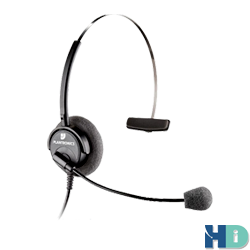
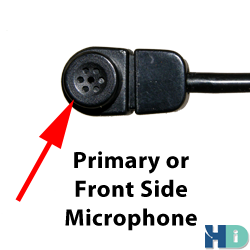
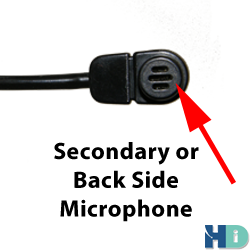
Plantronics H51N Noise-Canceling Headset
Bluetooth Headset Microphones Work Differently Than Business Headset Microphones.
Business-grade headsets target your voice while cutting down the background noise of your coworkers. Bluetooth headsets attempt to reduce noise, but their primary goal is to cut down wind noise that is picked up from being outside. With a low-end Bluetooth headset, your callers will hear wind whistling as it passes by the microphone, making your conversation distorted, choppy, and you will have to constantly repeat information. High-quality Bluetooth headsets with multiple microphones will greatly reduce wind noise, making for a clearer, more normal conversation. If you need a solution that works great outside with wind and traffic noise, consider the Plantronics Voyager 5200 UC, which will pair with both your Bluetooth mobile phone/tablet and your PC/laptop for VoIP connectivity.
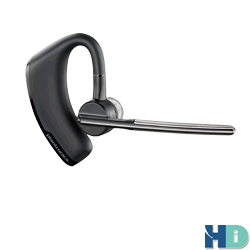
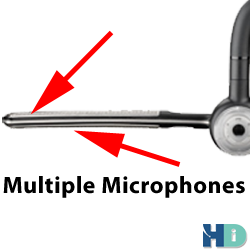

How Corded Amplifiers vs. Direct-Connect Cables Affect Noise-Canceling Microphones.
You may find it surprising when using corded headsets, but an amplifier can greatly affect your noise-canceling microphone effectiveness. An amplifier gives you the ability to turn your microphone up and down. This provides the luxury of turning it down just enough so your caller hears you comfortably, but not making the mic so sensitive that it picks up unnecessary background noise. If you opted for a direct-connect cable instead of an amplifier, you don’t have any way of controlling the mic volume, and must rely solely on the noise-canceling capabilities of the headset. If you’re having trouble hearing or being heard in an extremely loud environment with direct-connect cables, replace a few with amplifiers. Then test to see if your headsets become much better at reducing background noise.
Wireless office headsets used with multi-line phones will typically have compatibility, microphone, and speaker controls on the base. By turning down the microphone volume as much as possible, but maintaining an acceptable volume for your caller. This greatly improves the noise-canceling ability of the headset.
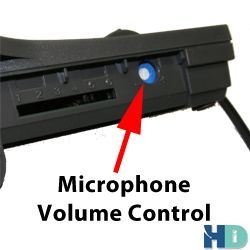
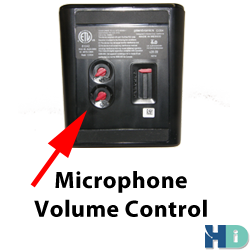
The Bottom Line of Noise-Canceling Headsets…
Noise-canceling technology in headsets can make or break the experience you and your caller experience with calls and customer interaction. Are you going to be able to close the deal? Are dogs barking and kids playing in the background effecting your concentration? What about that awesome football game that happened last night your co-workers are loudly carrying on about? If callers hear people yelling in the background with constant distractions, it will affect their confidence in doing business with your company.
By using noise-canceling headsets, you will greatly reduce background noise, which improves the communication between you and your caller. Better communication means less information repeated and more accurate information from your calls for a more productive day. Hopefully we answered the common questions about active noise cancelation and noise canceling to assist in your buying experience. Be sure to thoroughly test and evaluate if a noise-canceling headset would provide great value in your headset investment.


